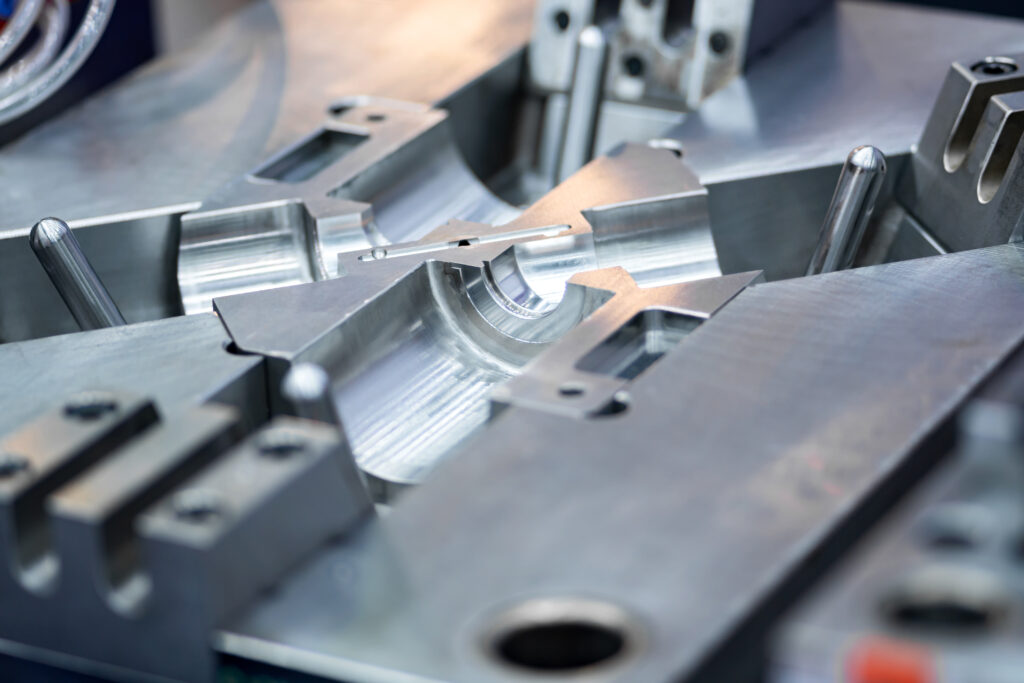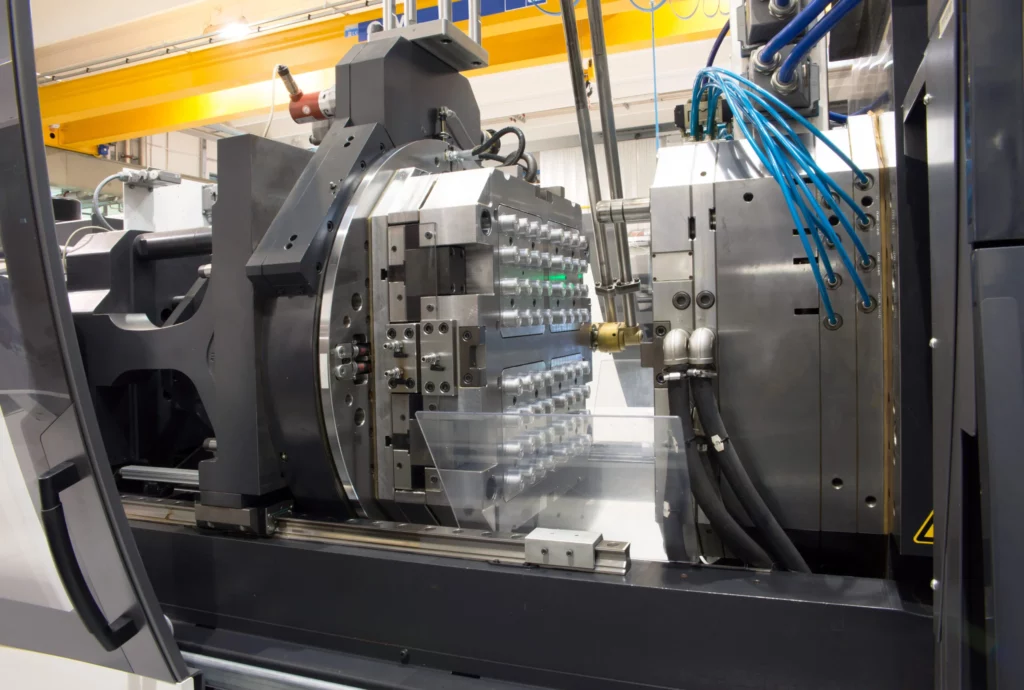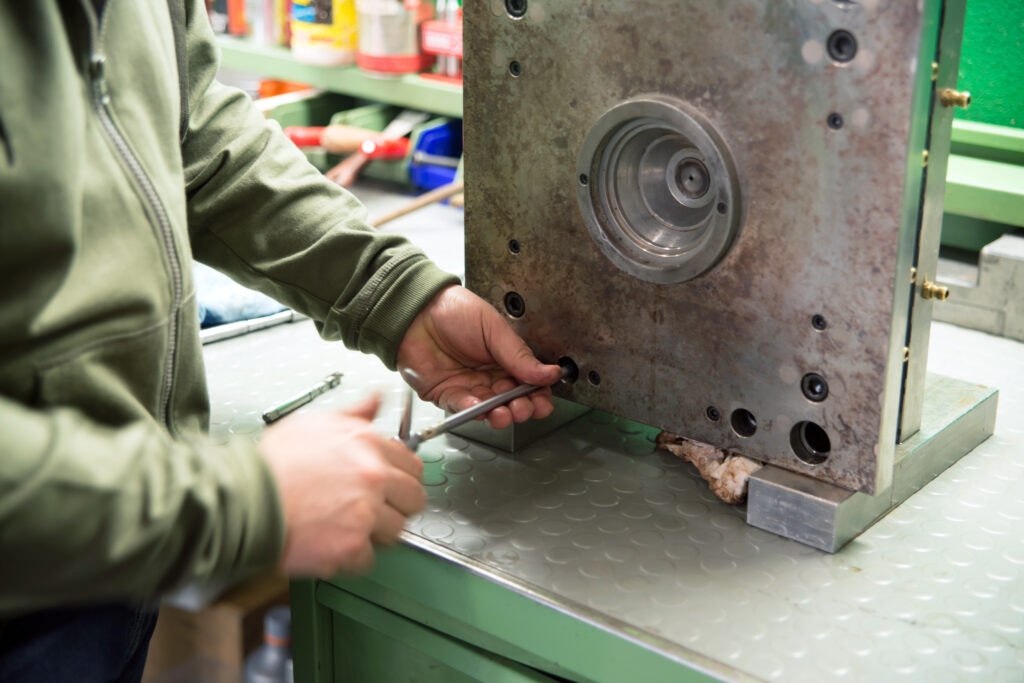Strona główna » Injection molds
Injection molds are essential tooling for injection molding production. They consist of many components, as they must ensure accuracy and withstand the high pressure under which the plastic is injected.
Injection molds are key tools in plastic batch and mass production, offering versatile options for shaping products. They are characterized by a complex structure, including. Forming sockets, filler, cooling and ejection systems.
The material from which they are made is often high-quality steel, and their cost and production time depend on many factors, such as the geometry of the workpiece and the number of slots.
The widespread use of injection molds in various sectors of the industry is crucial to the production of many well-known products and requires the selection of specific materials and application-specific mold design.
Injection molding is the most widely used technology for plastic mass production and mass production, and injection molds are the foundation of modern mass production of plastic parts.
From precise design, to the selection of appropriate materials, to the use of advanced processing technologies, this comprehensive process defines the quality and efficiency of injection molding product manufacturing.



The design of injection molds consists of many elements and components. This is described more extensively in the sub-page on injection mold construction. The following briefly describes the most important information:
Forming nest – which gives shape to the target product.
Injection mold cooling system – its function is to cool the molded part to such a temperature that it can be removed from the mold.
Filling system – its function is to feed plastic to the nozzle of the injection molding machine (through multiple channels)
Pushing system – is designed to allow the finished product to be pushed out after the production process.
Material selection plays a key role and must be tailored to the appropriate application. The injection molds are built from high-quality steel. Most often these are alloyed or stainless steels, which are characterized by high strength.
It is also crucial to know how many cycles the mold must withstand.
An injection mold can be compared to the negative of a photograph: its geometry and surface texture are directly transferred to the injected part.
Injection molds are a mainstay in plastics processing. Their manufacture is a complex process that requires precise design, selection of appropriate materials and the use of modern processing technologies.
Injection mold manufacturing is described in more detail on this subpage.
Designing and carefully planning the machining processes that will be on the mold, (milling, drilling, hollowing, etc.) are key.
The mold design is made for the injection of the target plastic, so it is very important to plan the plastic shrinkage for the mold (the differences between the shrinkage of different plastics can be significant).
It is important to properly plan and arrange in the form of cooling systems.
It is also crucial to analyze the injection of the workpiece and anticipate potential defects that could occur, such as pulls, overshoots and others.
Another important aspect is the proper planning and arrangement in the form of cooling systems.
Without precise mold design, the efficiency of the injection molding process will not be achieved.
Various processing technologies are used in the production of injection molds. One of them is CNC mold milling technology, which allows for precise mold making. This is usually the longest process, and with it we make components “almost done”
Then the components, depending on requirements, finished to the required standard.
During the production of injection molds, we use the processes of cutting in steel, milling, turning, grinding, drilling or EDM.
Injection molds are used where high volume or mass production of plastics is required. They make it possible to produce many products that we are familiar with, such as:
car parts
medical devices
components of electronics
packaging
many, many more…
The cost of making injection molds is relatively high. This is due to the high level of expertise required to design and manufacture a high-quality mold that is capable of producing thousands (or hundreds of thousands, or even millions) of parts. Some factors are:
High-quality steel – The injection molds are made of high-quality steel, so they have a lifespan of up to millions of units produced. The appropriate type of metal is selected individually for a given detail. It depends on, among other things. On its weight, geometry and the material from which it will be made
The injection mold is always made to meet individual needs – Due to the different geometry of the parts, it is necessary to invest in separate molds tailored to specific design considerations. Unfortunately, it is not possible to produce components that are very different in geometry, size and weight in a single mold.
Availability and price of material – Another issue affecting the cost of the mold is the availability and price of the metal itself needed to make the mold.
Injection mold design – The time it takes to design a mold is long, and those designing must be qualified.
Processing – Making a mold involves lengthy processing of various components, even over several weeks.
Nestability of the mold – The more nests, the more processing and the larger the mold size.
The final cost of an injection mold is an accumulation of the above-mentioned factors and others.
Injection mold manufacturing in China is attractive for several reasons. First of all, production costs are much lower than in many other countries, so significant savings can be achieved. We’re talking about up to 40-70% lower mold production costs.
Chinese manufacturers offer fast turnaround times for projects, which is crucial for companies needing to get a product to market quickly. We are able to achieve time savings even if we add 3-4 weeks for the mold transportation time to Europe.
China also has an extensive manufacturing infrastructure and advanced technology to produce high-quality molds.
These factors make injection mold manufacturing in China advantageous in terms of both cost and efficiency.
Injection molds play a key role in plastic batch and mass production, enabling the creation of products with diverse shapes and applications.
They are complex to construct, requiring the use of high quality steel and precise design to meet accuracy and strength requirements.
Manufacturing costs for injection molds are significant, but the can be lowered by outsourcing production to countries such as China, where lower labor costs, technological sophistication and rapid project execution contribute to savings. Crucial in the process of creating injection molds is the precise design and selection of materials, which has a direct impact on the quality and efficiency of the production of final plastic products.
Making a mold for an injection molding machine can range from about 15,000 PLN to as much as several hundred thousand PLN, with a lead time of about two to three months. It mainly depends on the required service life, the size of the manufactured part, the level of complexity and the number of slots.
The simplest form is that of a simple extractor. It consists of two halves: the cavity (front) and the core (rear).
In most cases, simple extractor forms are preferred because they are easy to design and manufacture, keeping the total cost relatively low. However, there are some design limitations: the part must have 2D geometry on both sides and must not have protrusions (i.e., areas that are not supported from below).
If more complex geometries are required, movable side cores or other inserts are necessary.
Side cores are movable parts that enter the mold from the top or bottom and are used to produce parts with protrusions (for example, a cavity or a hole). They should be used sparingly, as they increase the cost of the mold
YES, it’s worth it. Injection molds made in China are of the same high quality as those made in the EU, while their costs are much lower.
It is important to remember that production at an untested facility may involve more problems than benefits. This could be due to communication problems, the use of budget materials, or lower life expectancy.
Write us what product you need,
and we will contact you within 1 hour!
office@injection-molds.eu
Plastipol Poland Sp. z o.o.
Zawadzkiego 68/7, 71-246 Szczecin
VAT: PL8522664660
KRS: 0000849574
© 2024 Injection Molds
Realization: AdWise